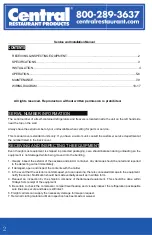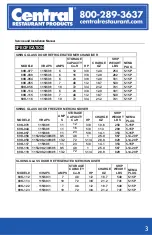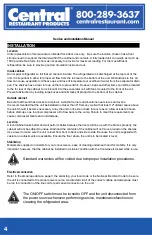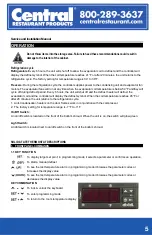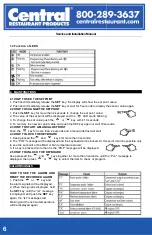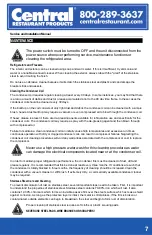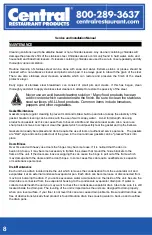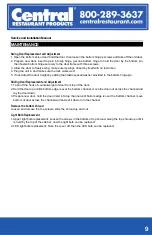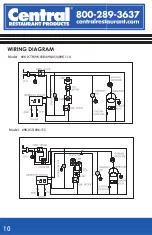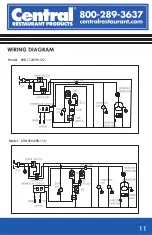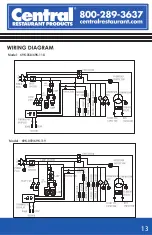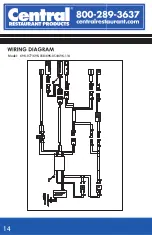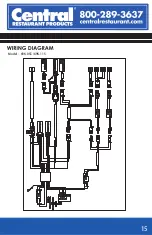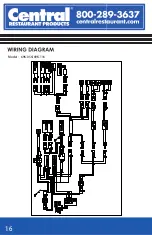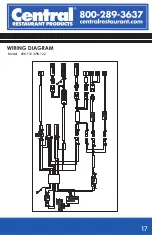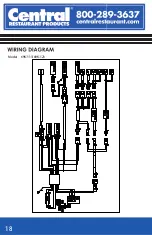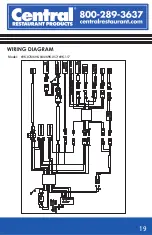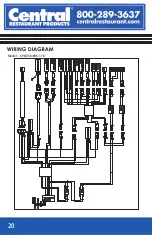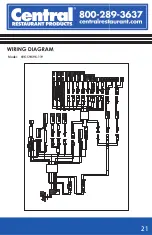
Service and Installation Manual
7
MAINTENANCE
The power switch must be turned to OFF and the unit disconnected from the
power source whenever performing service, maintenance functions or
cleaning the refrigerated area.
Refrigerators and Freezers
The interior and exterior can be cleaned using soap and warm water. If this isn't sufficient, try ammonia and
water or a nonabrasive liquid cleaner. When cleaning the exterior, always rub with the "grain" of the stainless
steel to avoid marring the finish.
Do not use an abrasive cleaner because it will scratch the stainless steel and plastic and can damage the
breaker strips and gaskets.
Cleaning the Condenser Coil
The condenser coil requires regular cleaning at least every 90 days. In some instances, you may find that there
is a large amount of debris and dust or grease accumulated prior to the 90 day time frame. In these cases the
condenser coil should be cleaned every 30 days.
If the build up on the coil consists of only light dust and debris the condenser coil can be cleaned with a simple
brush, heavier dust build up may require a vacuum or even compressed air to blow through the condenser coil.
If heavy grease is present, there are de-greasing agents available for refrigeration use and specifically for the
condenser coils. The condenser coil may require a spray with the de-greasing agent and then blown through
with compressed air.
Failure to maintain a clean condenser coil can initially cause high temperatures and excessive run times,
continuous operation with dirty or clogged condenser coils can result in compressor failures. Neglecting the
condenser coil cleaning procedures will void any warranties associated with the compressor or cost to replace
the compressor.
Never use a high pressure water wash for this cleaning procedure as water
can damage the electrical components located near or at the condenser coil.
In order to maintain proper refrigeration performance, the condenser fins must be cleaned of dust, dirt and
grease regularly. It is recommended that this be done at least every three months. If conditions are such that
the condenser is totally blocked in three months, the frequency of cleaning should be increased. Clean the
condenser with a vacuum cleaner or stiff brush. If extremely dirty, a commercially available condenser cleaner
may be required.
Stainless Steel Care and Cleaning
To prevent discoloration of rust on stainless steel, several important steps need to be taken. First, it is important
to understand the properties of stainless steel. Stainless steel contains 70-80% iron which will rust. It also
contains 12-30% chromium which forms an invisible passive film over the steel’s surface which acts as a shield
against corrosion. As long as the protective layer is intact, the metal is still stainless. If the film is broken or
contaminated, outside elements can begin to breakdown the steel and begin to form rust of discoloration.
Proper cleaning of stainless steel requires soft cloths or plastic scouring pads,
NEVER USE STEEL PADS, WIRE BRUSHES OR SCRAPERS!
7
Summary of Contents for 69K-038
Page 10: ...2 10 Model 69K 077 69K 038 69K 054 69K 114 Model 69K 055 69k 115 ...
Page 11: ...3 11 Model 69K 112 69K 122 Model 69K 056 69K 116 ...
Page 12: ...4 12 Model 69K 113 69K 123 Model 69K 078 69K 044 69K 057 69K 117 ...
Page 13: ...5 13 Model 69K 058 69K 118 Model 69K 059 69K 119 ...
Page 14: ...6 14 Model 69K 077 69K 038 69K 054 69K 114 ...
Page 15: ...7 15 Model 69K 055 69K 115 ...
Page 16: ...8 16 Model 69K 056 69K 116 ...
Page 17: ...7 17 Model 69K 112 69K 122 ...
Page 18: ...8 18 Model 69K 113 69K 123 ...
Page 19: ...9 19 Model 69K 078 69K 044 69K 057 69K 117 ...
Page 20: ...18 Model 69K 058 69K 118 20 ...
Page 21: ...21 Model 69K 59 69K 119 ...


